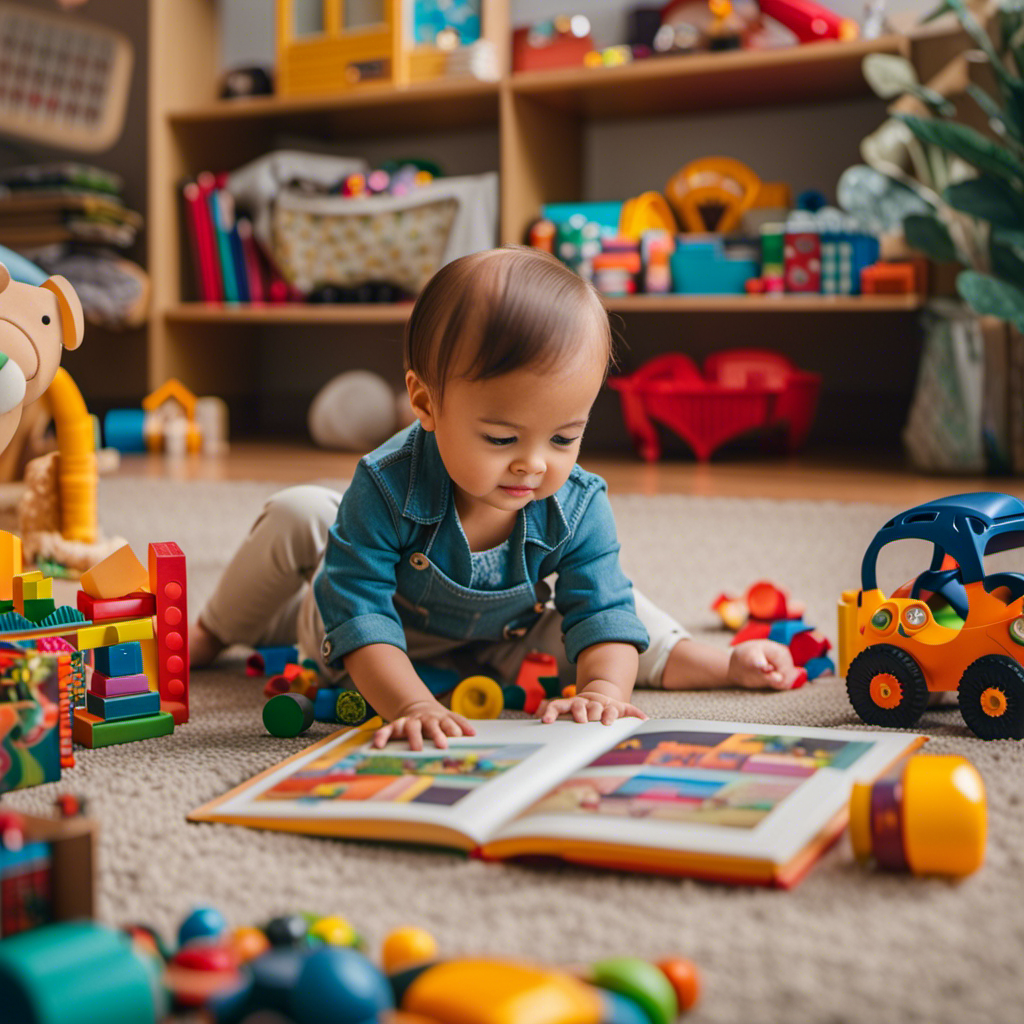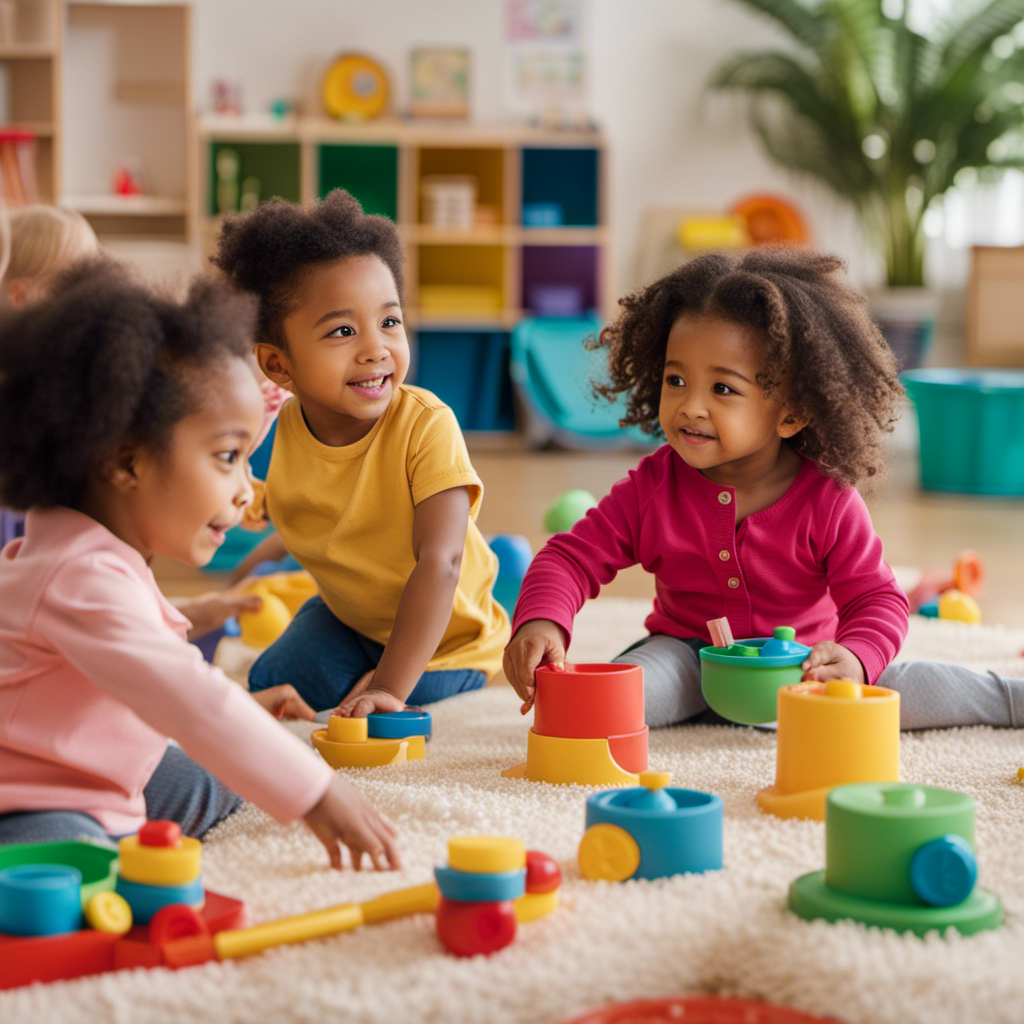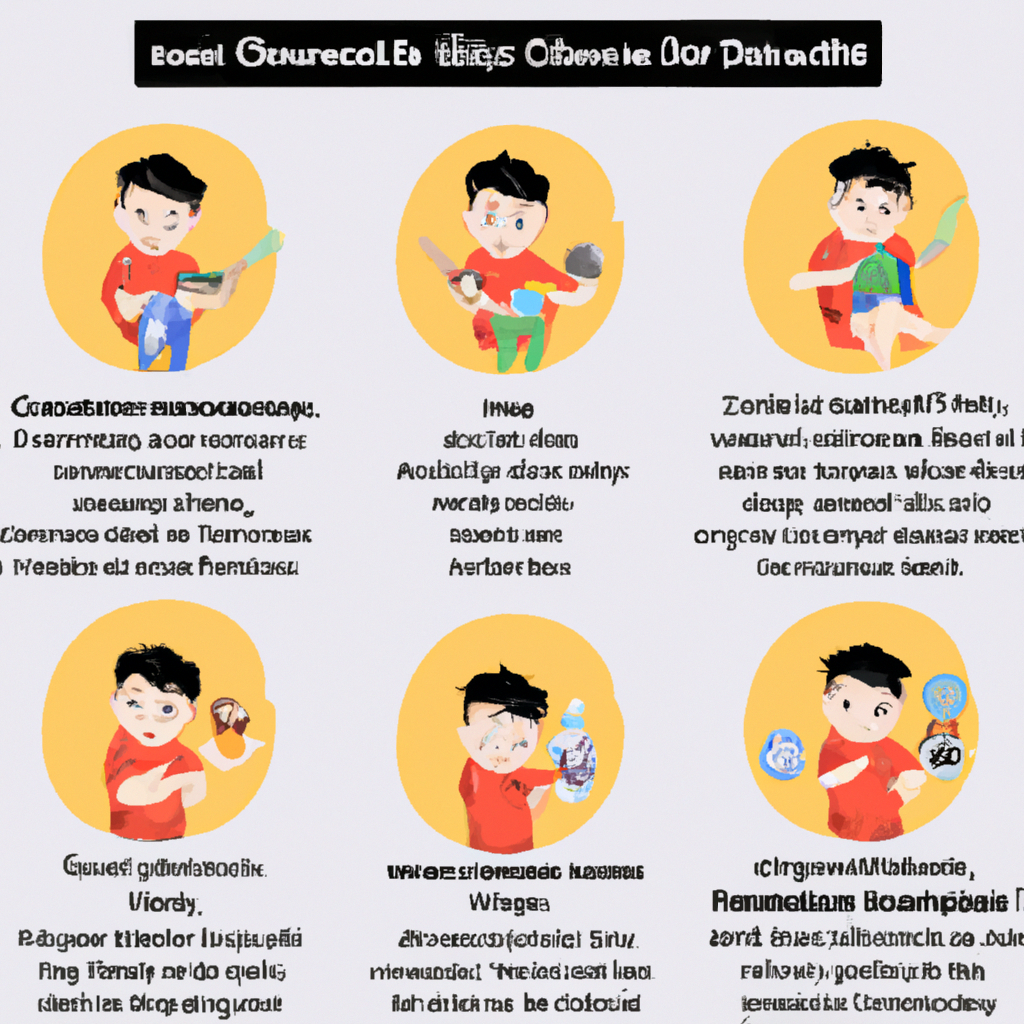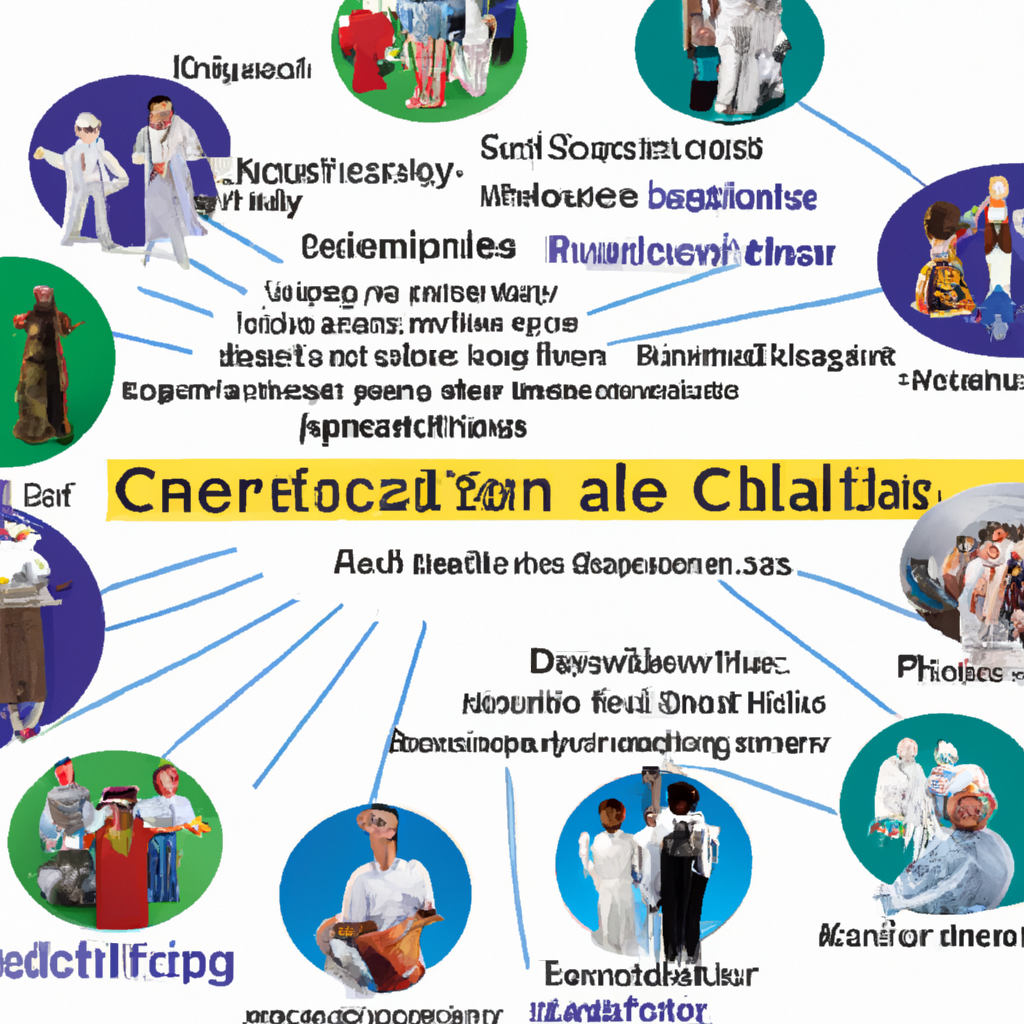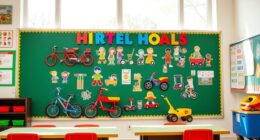As an expert in child development, I have witnessed the significant impact that mutual attention has on enhancing children’s cognitive abilities.
Picture this: a toddler and their caregiver engaged in a captivating game of peek-a-boo. In that playful moment, something magical happens. Their eyes meet, smiles ignite, and a connection is formed.
This phenomenon, known as joint attention, is a cornerstone of early development. In this article, we will delve into the definition, importance, milestones, and strategies surrounding joint attention in child development.
Get ready to unlock the secrets behind this vital skill!
Key Takeaways
- Joint attention is the ability for a child to share their attention with another person towards a common object or event.
- Joint attention plays a crucial role in various developmental milestones, enhancing social skills, attention span, problem-solving abilities, and language acquisition.
- Strong social communication skills lead to positive relationships, better academic performance, and higher self-esteem.
- Caregivers play a crucial role in promoting joint attention skills, which are important for language development and social interaction.
Definition of Joint Attention
Joint attention is the ability for a child to share their attention with another person towards a common object or event. It is a fundamental aspect of social development and plays a crucial role in various developmental milestones.
The importance of joint attention cannot be overstated, as it serves as a foundation for various cognitive and social skills.
During the first year of life, infants start to develop joint attention skills. They begin to follow an adult’s gaze and point towards objects of interest. By 9-12 months, they can actively engage in joint attention by looking back and forth between the object and the adult. This ability allows them to learn from others, expand their vocabulary, and develop their understanding of the world.
Furthermore, joint attention is closely linked to the development of language skills. When a child engages in joint attention, they are more likely to initiate and respond to communication. This back-and-forth interaction helps them develop their expressive and receptive language abilities.
Importance of Joint Attention in Child Development
When it comes to child development, social communication skills play a crucial role in fostering healthy relationships and connections.
Through joint attention, children learn to share their attention with others, which is essential for effective communication.
Moreover, research has shown that joint attention not only enhances social skills but also contributes to cognitive development by improving attention span, problem-solving abilities, and language acquisition.
Social Communication Skills
Children with strong social communication skills are more likely to engage in successful interactions with others. These skills encompass the ability to effectively express oneself and interpret the messages of others, and they play a crucial role in our daily interactions.
Research has shown that children who excel in social communication are more likely to develop positive relationships, have better academic performance, and exhibit higher self-esteem.
Play therapy is an effective intervention that can help children improve their social communication skills. It provides a safe and supportive environment for exploration and practice.
Nonverbal communication, such as facial expressions, gestures, and body language, also plays a significant role in social communication. Understanding and effectively utilizing nonverbal cues can enhance one’s ability to connect and communicate with others.
Strengthening social communication skills can have profound effects on a child’s cognitive development. It fosters their ability to process information, solve problems, and think critically.
Cognitive Development Benefits
Research has shown that strong social communication skills have a profound impact on cognitive development, enhancing a child’s ability to process information and think critically. Social interaction plays a crucial role in stimulating the brain and promoting cognitive benefits.
When children engage in social interactions, they are exposed to different perspectives, ideas, and experiences, which in turn, stimulate their thinking and problem-solving abilities. Through social communication, children learn to understand and interpret verbal and nonverbal cues, expanding their cognitive abilities.
Additionally, social interactions provide opportunities for children to practice their language skills, enhance their vocabulary, and develop their memory and attention span. These cognitive benefits lay a solid foundation for the subsequent section about the developmental milestones of joint attention, which highlight the crucial role of social interaction in child development.
Developmental Milestones of Joint Attention
One of the key developmental milestones of joint attention is the ability to follow someone’s gaze. Research in the field of joint attention has shown that this skill typically emerges around 9 to 12 months of age. It is an essential aspect of social development and plays a crucial role in communication and language acquisition.
Studies have demonstrated that joint attention interventions can be effective in promoting the development of this milestone. These interventions often involve structured play sessions where caregivers and children engage in activities that encourage joint attention behaviors, such as pointing and sharing attention to objects or events. Research has shown that these interventions can lead to significant improvements in joint attention skills, as well as related outcomes such as language development and social interaction.
Understanding the developmental milestones of joint attention is important for both parents and professionals working with young children. By recognizing the typical age range for the emergence of this skill, caregivers can provide appropriate support and interventions to promote its development.
This sets the stage for the subsequent section, which explores the role of caregivers in promoting joint attention without explicitly mentioning ‘steps’ or a transitional phrase.
The Role of Caregivers in Promoting Joint Attention
As a researcher in child development, I have come to understand the importance of caregiver influence in promoting joint attention skills in young children.
Joint attention, which refers to the ability to share attention with another person towards a common object or event, plays a crucial role in language development and social interaction.
By actively engaging in joint attention activities and providing supportive strategies, caregivers can enhance their child’s joint attention skills and foster their overall development.
In this discussion, I will explore the impact of caregiver involvement on joint attention and provide strategies that caregivers can use to effectively promote this important developmental milestone.
Importance of Caregiver Influence
You can see how important your influence as a caregiver is in shaping your child’s joint attention skills. As a caregiver, you play a crucial role in providing the necessary support and nurturing relationships that contribute to the development of joint attention.
Here are two key ways in which you can enhance your child’s joint attention skills:
-
Create an environment of caregiver support: By establishing a strong and supportive relationship with your child, you can create a safe space for them to engage in joint attention activities.
-
Foster nurturing relationships: Encourage interactions between your child and other caregivers, siblings, or peers. These relationships provide opportunities for joint attention and help your child develop their social and communication skills.
Enhancing Joint Attention
Now that we understand the importance of caregiver influence in promoting joint attention, let’s explore some strategies for enhancing this crucial skill.
Parent involvement plays a key role in supporting joint attention development. One effective approach is play therapy, which involves engaging children in play activities that specifically target joint attention skills.
During play therapy sessions, parents actively participate and model joint attention behaviors, such as pointing to objects and following the child’s gaze. This not only fosters a stronger parent-child bond but also provides the child with valuable opportunities to practice and refine their joint attention abilities.
By actively involving parents in play therapy, joint attention skills can be reinforced and generalized to other settings and activities.
Transitioning into the subsequent section about strategies for caregiver involvement, let’s explore some additional ways parents can enhance joint attention outside of play therapy sessions.
Strategies for Caregiver Involvement
One effective way for parents to enhance their involvement in promoting joint attention skills is through play therapy, where they actively participate and model joint attention behaviors. This allows caregivers to support their child’s development while building a strong bond with them.
Here are some strategies for caregiver involvement in promoting joint attention skills:
- Use visual aids and gestures to support verbal communication.
- Follow the child’s lead and engage in activities they show interest in.
- Provide a structured and predictable environment to help the child focus their attention.
- Use joint attention techniques, such as pointing and shared gaze, to direct the child’s attention to objects or events.
- Offer praise and reinforcement when the child successfully engages in joint attention.
Factors Affecting Joint Attention Skills
Factors affecting joint attention skills include a child’s social environment and their level of cognitive development. Research has shown that these factors play a crucial role in the development of joint attention skills in children.
Caregiver influence is one of the key factors that can significantly impact a child’s ability to engage in joint attention. Caregivers play a crucial role in fostering joint attention skills by providing a supportive and responsive social environment. When caregivers actively engage with their children, they create opportunities for joint attention to occur. For example, caregivers can use gestures, eye contact, and verbal cues to draw a child’s attention to objects or events, thus promoting joint attention.
Additionally, a child’s level of cognitive development also influences their ability to engage in joint attention. As children develop cognitive skills such as attention, memory, and problem-solving, their ability to share attention with others improves. For instance, a child with advanced cognitive skills may be more capable of following another person’s gaze or understanding gestures, leading to enhanced joint attention skills.
Understanding these factors is essential for promoting the development of joint attention skills in children. By recognizing the importance of the social environment and cognitive development, caregivers can implement effective strategies for enhancing joint attention in children.
Strategies for Enhancing Joint Attention in Children
By actively engaging with my child and using gestures, eye contact, and verbal cues, I can create opportunities for enhanced joint attention skills. Caregiver interventions play a crucial role in promoting joint attention development in children.
Here are three strategies that have been shown to be effective:
-
Follow the child’s lead: I observe my child’s interests and join in their play. By following their lead, I can encourage them to engage in shared attention by focusing on objects or activities that capture their attention.
-
Use visual cues: I use gestures, such as pointing or showing, to direct my child’s attention to objects or events. This helps them understand the importance of joint attention and encourages them to follow my gaze or point.
-
Incorporate interactive play activities: I engage in games or activities that require joint attention, such as peek-a-boo or building blocks together. These activities provide opportunities for turn-taking, joint problem-solving, and shared enjoyment.
Common Challenges in Joint Attention Development
To effectively support the development of joint attention skills, it’s important to be aware of the common challenges that can arise. Joint attention refers to the ability to share attention with another person towards a common object or event. It plays a crucial role in social interaction and language development in children.
One common challenge in joint attention development is maintaining focus. Children may have difficulty sustaining attention on an object or activity, making it challenging to engage in joint attention with others. Another challenge is initiating joint attention. Some children may struggle to initiate shared attention by pointing or directing others’ attention to an object or event.
Caregiver involvement is crucial in overcoming these challenges. Caregivers can support joint attention development by being attentive and responsive to children’s cues. They can encourage joint attention by using gestures, pointing, and labeling objects during interactions. Additionally, caregivers can create a supportive environment by minimizing distractions and providing clear, simple instructions.
In summary, common challenges in joint attention development include maintaining focus and initiating joint attention. Caregiver involvement plays a significant role in supporting children’s joint attention skills. By being attentive, responsive, and creating a supportive environment, caregivers can help children overcome these challenges and promote their overall language development.
Moving forward, let’s explore the relationship between joint attention and language development.
Joint Attention and Its Relationship to Language Development
You can enhance your child’s language development by fostering their ability to share attention with others towards a common object or event. Language acquisition and joint attention are closely linked, as joint attention skills play a crucial role in language development.
Joint attention refers to the ability to coordinate attention between oneself, another person, and an object or event of interest. It involves sharing attention and focusing on the same thing as someone else. Research has shown that children who have strong joint attention skills tend to have better language skills.
There are various joint attention interventions that can support language development in children. These interventions typically involve structured activities that promote joint attention, such as using toys or books to engage the child and encourage them to share attention with others. These interventions aim to improve the child’s ability to initiate joint attention, respond to joint attention bids from others, and sustain joint attention over time.
Frequently Asked Questions
Are There Any Long-Term Effects if Joint Attention Is Not Developed in Early Childhood?
Long-term consequences can arise if joint attention is not developed in early childhood. Joint attention skills are crucial for social, cognitive, and language development. Without these skills, children may struggle with communication, forming relationships, and understanding others’ perspectives.
Research shows that joint attention deficits are associated with language delays, autism spectrum disorders, and other developmental challenges. Therefore, it is essential to support and encourage the development of joint attention skills in early childhood for optimal long-term outcomes.
How Does Joint Attention Impact Social Skills in Children?
Joint attention plays a crucial role in a child’s social skills development. It impacts their ability to communicate effectively, understand others’ perspectives, and build meaningful relationships. Through joint attention, children learn to share attention, maintain eye contact, and engage in reciprocal interactions.
This fosters their cognitive development by enhancing their understanding of social cues and language. Research shows that joint attention is a strong predictor of language development in children, highlighting its significance in early childhood.
What Are Some Strategies for Promoting Joint Attention in Children With Developmental Delays?
Promoting joint attention in children with developmental delays requires specific strategies. It’s important to create a supportive environment that encourages engagement and interaction.
Using visual aids, such as pointing to objects or using pictures, can help direct attention. Incorporating games and activities that require joint attention, like puzzles or building blocks, can also be effective.
Additionally, providing clear and concise instructions, using gestures and facial expressions, can enhance communication and promote joint attention.
These strategies can help children with developmental delays develop their social and cognitive skills.
Can Joint Attention Difficulties Be a Sign of a More Serious Underlying Condition?
Joint attention difficulties can indeed be a sign of an underlying condition. These difficulties can have a significant impact on communication. It is important to recognize and address these challenges early on, as they can affect a child’s social and cognitive development.
Seeking professional guidance and evaluations can help identify any potential underlying conditions that may be contributing to the joint attention difficulties. Early intervention and targeted interventions can then be implemented to support the child’s communication skills and overall development.
Is Joint Attention a Skill That Can Be Taught and Learned, or Is It Solely Dependent on a Child’s Natural Abilities?
Teaching joint attention is crucial for a child’s development as it enhances their social and cognitive skills. It’s not solely dependent on a child’s natural abilities; it can be taught and learned.
By training children to follow our gaze and share attention, we can improve their ability to communicate and interact with others.
The benefits of joint attention extend beyond childhood, as it lays a foundation for successful relationships and academic success later in life.
Conclusion
In conclusion, joint attention is a crucial component of child development, fostering social, cognitive, and language skills. Through shared focus and engagement, children learn to navigate the world and communicate effectively.
Caregivers play a vital role in promoting joint attention, providing a supportive environment for learning and growth. However, challenges may arise, and it is important to employ strategies to enhance joint attention skills.
By understanding the significance of joint attention and its relationship to language development, we can unlock the potential for optimal child development and create connections that last a lifetime.
With a background in early childhood education and a genuine enthusiasm for fostering learning through play, Ava’s writing transcends the mundane and transforms into a beacon of inspiration for our readers. Her dedication to understanding the intricacies of Montessori, Preschool, STEM, and Waldorf philosophies enriches her content with a level of authenticity that makes Toddler Ride On Toys a go-to resource.
